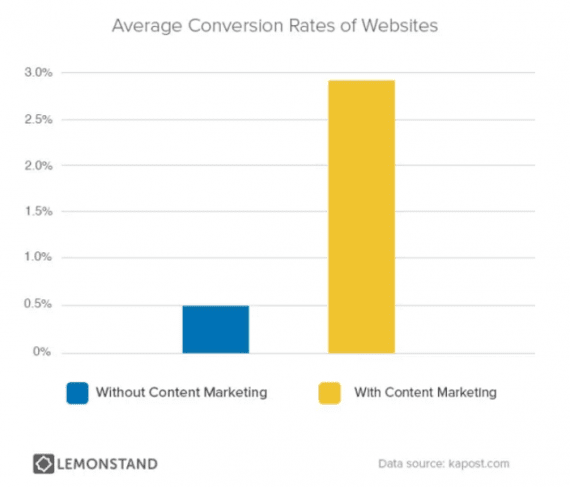Business-to-consumer content marketing that focuses on providing useful, informative, or entertaining information may play a role in retaining customers and, thereby, increasing customer lifetime value and profit.
Customer lifetime value (CLV) for ecommerce is a measurement of how much shoppers will spend in an online store for as long as those customers continue to shop at that store. CLV may be applied to a particular customer or used to estimate the value of acquiring a new customer who matches some known profile or persona.
There is a strong relationship between CLV and customer loyalty. An online store with a relatively low average CLV may not be very good at retaining customers. This might indicate a problem with product selection or customer service or some other aspect of the business. Similarly, stores with a relatively high average CLV might be better at getting shoppers to return and make an additional purchase or even purchase more each time they buy.
Almost intuitively, many marketers understand that it is less expensive and more profitable to market to existing customers. The question, then, is how can an ecommerce business encourage customer loyalty?
Content Marketing May Increase Customer Loyalty
For retailers, customer loyalty begins with customer service, quality products, and fair prices. These are the essentials. But there are many things beyond these that can also contribute to customer loyalty, rising CLV, and, ultimately, profit. Among these CLV contributors is content marketing.
“Great content,” wrote LemonStand Vice President of Growth Ross Paul, in an August 2016 article, “brings customers back after a purchase and makes your brand useful beyond just having products to buy. This helps you generate repeat purchases and increases the lifetime value of your customers.”
Paul’s assertion is in keeping with the opinions of other marketing and ecommerce professionals. For example, Demand Metric, a marketing research firm, released a series of content marketing statistics that support the idea that content can build loyalty.
According to Demand Metric, 80 percent of customers surveyed appreciated “learning about a company through custom content.” About 57 percent of those surveyed read some form of content marketing at least once per month, and some 82 percent of respondents felt “more positive about a company after reading custom content.”
In a post about how to increase CLV, Kissmetrics suggested using “an engaging and informative” email newsletter.
“Just having a newsletter isn’t enough,” the Kissmetrics post stated. Your email newsletter should be substantive, with engaging content that will entice recipients to open your email message rather than relegating it to the digital trash bin.
LemonStand’s Paul reported that ecommerce businesses that use content marketing to engage shoppers, both new and loyal, have an average conversion rate (2.9 percent) about six times higher than the average conversion rate for online retailers not using content marketing (0.5 percent).

LemonStand reported that sites using content marketing enjoyed conversion rates about six times better than sites that did not use content marketing.
Content Marketing for CLV
If, then, content marketing encourages shopper loyalty, which in turn leads to relatively higher average CLVs and profit, how can you use content in your ecommerce business?
- Be useful or entertaining. Content marketing is most engaging when it helps your audience solve a problem or improve their lives in some way. Focus on content that achieves these goals, be it a how-to article, a recipe, or even an entertaining profile or humor post.
- Be consistent. When your aim is customer retention, publish a steady and regular stream of content. Consider a weekly blog post, a regular podcast, or a scheduled YouTube show.
- Be interactive. Respond to audience comments, social media posts, or feedback. When someone shares your article, thank her. If they comment, respond (if a response makes sense). What’s more, make it easy for customers to deepen their relationship, sign up for more interactions, and otherwise engage your business.
- Be committed. Content marketing is a long-term strategy. The best content marketers know it can take time for content to work.
Content marketing also requires planning. Ecommerce marketers should create a budget for content — similar to an advertising budget — and develop an editorial calendar, describing what you plan to publish, and when.




